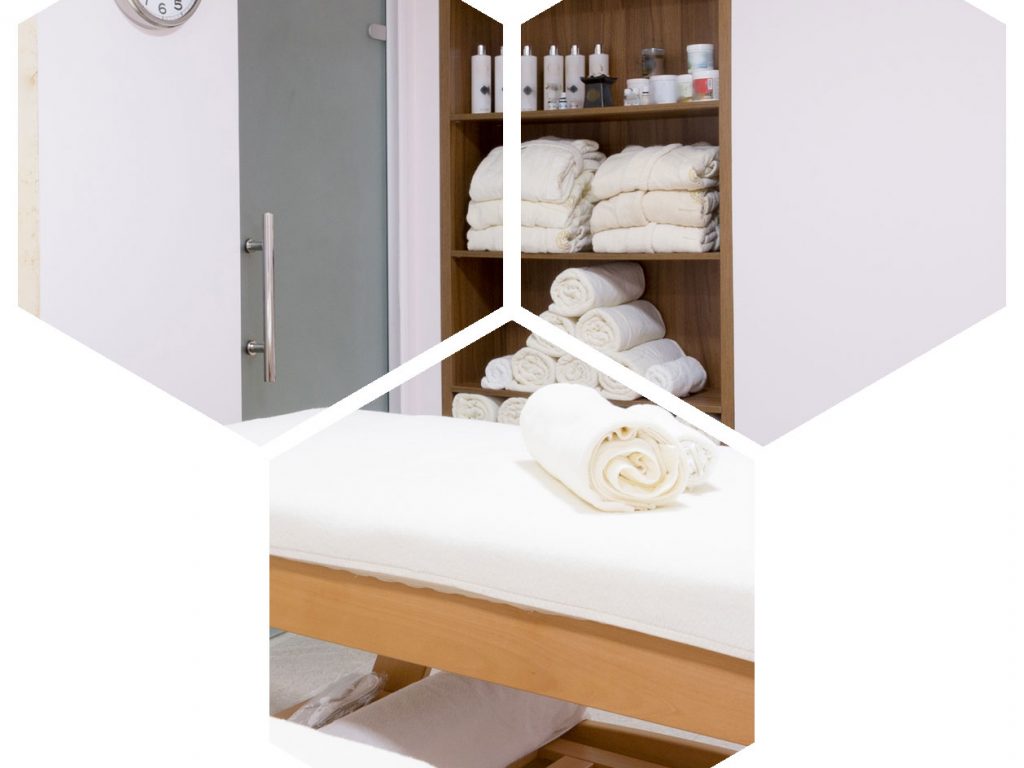WHM Trigger Point Certifications
The world is full of therapists who offer Trigger Point treatments.
However, there is a severe global dearth of Trigger Point practitioners who have extensive knowledge along with a comprehensive applied implementation of this therapy; we continue to work toward correcting this critical shortage.
‘Basics’ is an ideal adjunct to massage therapy, bodywork, physiotherapy, occupational therapy, osteopathy, sports medicine, personal trainers and other health professionals who typically employ hands-on techniques and could benefit from basic skills in comprehensive Trigger Point theory, protocol, and palpation/treatment techniques.
Attendees discover that there’s so much more to Trigger Point Therapy than simply following an illustration to inactivate a specific TrP.
This course is typically presented by William Huhn, to professional groups, by arrangement. However, private one-on-one training may be arranged.
- It is presented live, in-class, over 5 consecutive days.
- There is pre-reading required (perpetuating factors)
- A Certificate of Achievement is issued upon full attendance and successfully passing a written test.
Sorry, this course is NOT open to the general public.
Prerequisite: Currently practicing massage therapy, bodywork, physiotherapy, occupational therapy, osteopathy, sports medicine, certified personal trainer and other health/wellness professionals.
Contact us for specific details.
Note: this course covers manual compression only.
It does NOT include dry needling nor injection techniques.
Day 1:
Trigger Point theory; 4.0 hours
- Myofascial Trigger Points are real
- Causes of trigger point formation
- Trigger points refer pain in predictable patterns
- Trigger points affect muscle, fascia and ligaments
- Other symptoms that trigger points produce (e.g. autonomic/proprioceptive phenomena)
- Susceptibility to trigger points
- Vitamins and minerals; their relationship to muscle health
- How to carry out basic “trigger points” assessment of your client
- How to physically train/rehab the client when trigger points are suspected
- The Trigger Point Therapy Workbook: by Clair Davies, N.C.T.M.B.
- Travell and Simons, M.D. and their contributions to Trigger Point
Lunch 1.0 hour
Intake/Assessment; 2.5 hours
- Patient/client Intake interview
- Assessment techniques
Questions 0.5 hour
Day 2:
Hands-on; 1.0 hour
- TMJD and related issues.
- Practicing location/palpation techniques on sternocleidomastoid, levator scapula, masseter, temporalis, lateral pterygoid, medial pterygoid, digastric, pectoralis and trapezius muscles.
Hands-on; 2.0 hours
Treating headaches, neck pain, vertigo, migraine.
- detailed palpation techniques of muscles for trigger points, treatment techniques, post-treatment protocol, latent/active TrPs, contraindications.
- explain how TrPs play a major role in vertigo, neck pain, headache issues and migraine.
- discuss the muscles that play a causal role in these issues – and how to deactivate their trigger points.
Some muscles we will treat are: sternocleidomastoid, suboccipital, trapezius, temporalis, and others.
- demonstrate how exercise affects trigger points in these muscles.
- protocol for rehabilitating the TrP affected muscle
Lunch 1.0 hour
Hands-on; 3.0 hours
Shoulder issues, including Frozen Shoulder.
- detailed palpation techniques of muscles for trigger points, treatment techniques, post-treatment protocol, latent/active TrPs, contraindications.
- explain how TrPs play a major role in Frozen Shoulder, shoulder pain, stiffness, rotator cuff injuries, and range of motion issues.
- discuss the muscles that play a causal role in these issues – and how to deactivate their trigger points.
- Some muscles we will treat are: trapezius, rhomboid, infraspinatus, supraspinatus, teres minor, subscapularis, and others.
- protocol for rehabilitating the TrP affected muscle.
- how TrPs always affect muscle strength and performance and why muscle performance always improves when trigger points are removed.
Questions 0.5 hour
Day 3:
Review Day 2. 1.0 hour
Hands-on; 2.5 hours
Arm pain, CTS, tennis/golfer’s elbow, hand pain/numbness.
- detailed palpation techniques of muscles for trigger points, treatment techniques, post-treatment protocol, latent/active TrPs, contraindications.
- explain how TrPs play a major role in arm pain, CTS, tennis/golfer’s elbow, hand pain/numbness.
- discuss the muscles that play a causal role in these issues – and how to deactivate their trigger points.
- Some muscles we will treat are: triceps, scalenes, biceps, hand extensors/flexors and others.
- demonstrate how exercise affects trigger points in these muscles.
- protocol for rehabilitating the TrP affected muscle.
- how stress, medications, over-use, trauma and skeletal abnormalities affect TrPs.
Lunch 1.0 hour
Hands-on; 3.0 hours
Chest pain, breast pain, and upper back pain.
- detailed palpation techniques of muscles for trigger points, treatment techniques, post-treatment protocol, latent/active TrPs, contraindications.
- explain how TrPs play a major role in chest pain, breast pain, and upper back pain.
- discuss the muscles that play a causal role in these issues – and how to deactivate their trigger points.
- Some muscles we will treat are: pectoralis major/minor, serratus anterior, serratus posterior superior, scalenes, rhomboids, and others.
- demonstrate how exercise affects trigger points in these muscles.
- protocol for rehabilitating the TrP affected muscle.
- how stress, medications, over-use, trauma and skeletal abnormalities affect TrPs.
Questions 0.5 hour
Day 4:
Hand-in written tests
Review Day 3. 1.0 hour
Hands-on; 3.0 hours
Lumbar, hips, buttocks and groin issues.
- detailed palpation techniques of muscles for trigger points, treatment techniques, post-treatment protocol, latent/active TrPs, contraindications.
- explain how TrPs play a major role in lumbar pain, hips, buttocks, and groin issues.
- discuss the muscles that play a causal role in these issues – and how to deactivate their trigger points.
Some muscles we will treat are: gluteus maximus/medius/minimus, quadratus lumborum, erector spinae, piriformis, iliopsoas, rectus abdominis and others.
- demonstrate how exercise affects trigger points in these muscles.
- protocol for rehabilitating the TrP affected muscle.
- how stress, medications, over-use, trauma and skeletal abnormalities affect TrPs.
Lunch 1.0 hour
Hands-on; 2.5 hours.
Bladder, IBS, genital pain, dysmenorrhea, abdominal, and autonomic/proprioceptive phenomena issues.
- detailed palpation techniques of muscles for trigger points, treatment techniques, post-treatment protocol, latent/active TrPs, contraindications.
- explain how TrPs play a major role in bladder, IBS, genital pain, dysmenorrhea, and abdominal and autonomic phenomena issues.
- discuss the muscles that play a causal role in these issues – and discuss how to deactivate their trigger points.
- Some muscles we will treat are: abdominal obliques, rectus abdominis, adductor magnus/ longus/ brevis, pectoralis major and sternocleidomastoid.
- demonstrate how exercise affects trigger points in these muscles.
- protocol for rehabilitating the TrP involved muscle.
- how stress, over-use, trauma and skeletal abnormalities affect TrPs.
Questions 0.5 hour
Day 5:
Return Tests and Review Day 4. 1.0 hour
Hands-on; 2.5 hours
Thigh, (includes hamstring issues) knees, legs and feet. This will include sciatic pain, plantar fasciitis, heel spurs, and shin splints.
- detailed palpation techniques of muscles for trigger points, treatment techniques, post-treatment protocol, latent/active TrPs, contraindications.
- explain how TrPs play a major role in thigh, knees, legs and feet; this will include sciatic pain, plantar fasciitis, heel spurs, and shin splints.
- discuss the muscles that play a causal role in these issues – and how to deactivate their trigger points.
Some muscles we will treat are: biceps femoris, semitendinosis, semimembranosus, hip adductors, quadriceps, extrinsic/intrinsic foot muscles.
- demonstrate how exercise affects trigger points in these muscles.
- protocol for rehabilitating the TrP affected muscle.
- how stress, over-use, trauma and skeletal abnormalities affect TrPs.
Lunch 1.0 hour
Hands-on; 2.5 hours
Morton Foot and Intrinsic/Extrinsic Foot Muscles. This will include
- identifying Morton Foot Structure (MFS),
- demonstrate simple and effective corrective orthotic use for MFS
- TrPs that may be causal to chronic foot or toe pain
Review – Intake/assessment and applied treatment techniques
Questions/Summary/Certificates/Evaluations 1.0 hour
As well as having a background in health/wellness, here’s what you’ll need to study and practice to obtain your WHM Level 1 Certification.
Yes, it IS a lot of work, but worth the effort if you want to be more than a TPT dabbler.
- Have an above average knowledge of human anatomy
- Know most of the muscles that are involved with Trigger Point… this includes their names, attachments/location, and their function (there’s a lot of them – get busy!)
- You should have a superior knowledge of bones (most of them) – their names/location
- You own the Travell & Simons Trigger Point Manuals (hardcopy please – if you can find them) and
- You must study the first four chapters of Volume 1 Travell & Simons’ Myofascial Pain and Dysfunction: The Trigger Point Manual (2-Volume Set) by Simons, David G., Travell, Janet G., Simons, Lois S., Cummin 2nd (second) Edition [Hardcover(1998)]
- Since my applied approach to TPT is somewhat based on Clair Davies method of treatment, I’d like you to study the Trigger Point Therapy Workbook, by Clair Davies and Amber Davies.
- The Trigger Point Therapy Workbook: Your Self-Treatment Guide for Pain Relief (A New Harbinger Self-Help Workbook)
- You have attended at least 1, William Huhn Method™ 1-day workshops, or better yet, have attended the WHM (5-day) “Trigger Point Basics” course. This will introduce you to my approach to effective TPT. Note: You can wait for me to possibly come to your city to present a workshop or you may come to me for a private workshop.
- You have practiced your applied techniques on your friends and family and anyone else who is willing to offer their body to you for practice. I strongly suggest you do not charge a fee to these folks, since you still know very little about TPT, and they’re helping you to acquire some skills. You should ideally log about 100 hours of applied practice, preferably with different clients and body types.
- Then, finally, you will successfully complete the WHM Level 1 workshop that includes a written exam, to obtain your Certificate of Achievement.
- Congratulations, now the real learning begins!
- Holds a current William Huhn Method™ – Level 1 Certificate of Achievement
- Logged over 500 hours employing Trigger Point therapy/bodywork as their primary treatment method, not adjunct to to other therapy models
- Extensive knowledge of Travell & Simons Trigger Point manuals
- Demonstrates comprehensive “client intake” methods
- Exceptional client care skills
- Demonstrates extensive understanding of Trigger Point protocol
- Demonstrates above average knowledge of human anatomy and physiology
- Successful completion of the 1-day, Level 2 written / practical examination
- Holds a current WHM™ – Level 2 Certificate of Achievement
- Logged at least 100 intern hours at WHM™ workshops
- Exceptional speaking/instructing skills
- Well organized and self-motivated
- Employs Trigger Point methods as their primary method of treatment for their clients
- Successful completion of the WHM™ Approved Educator, examination process


